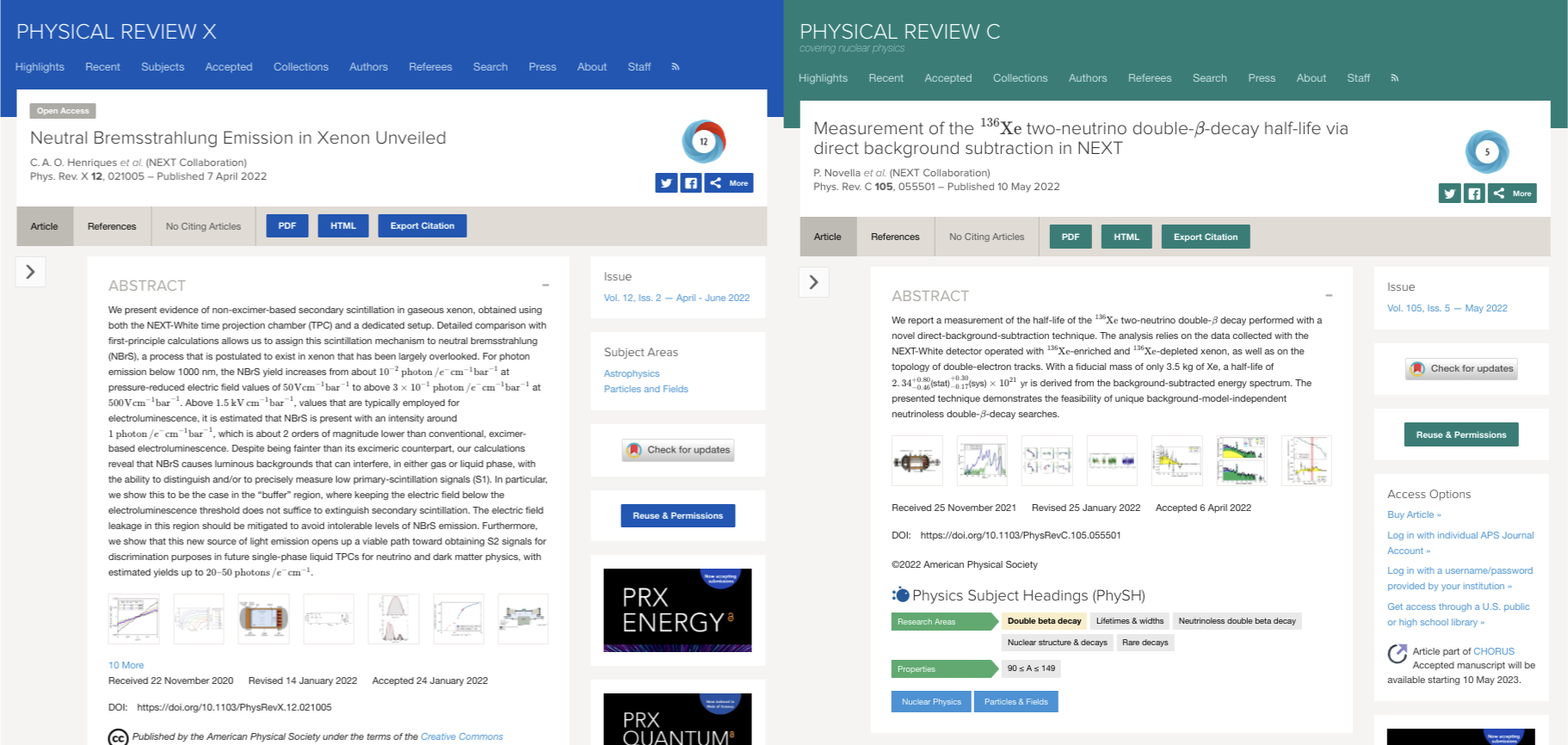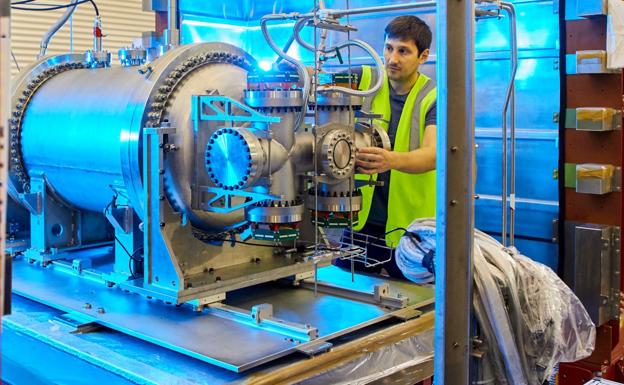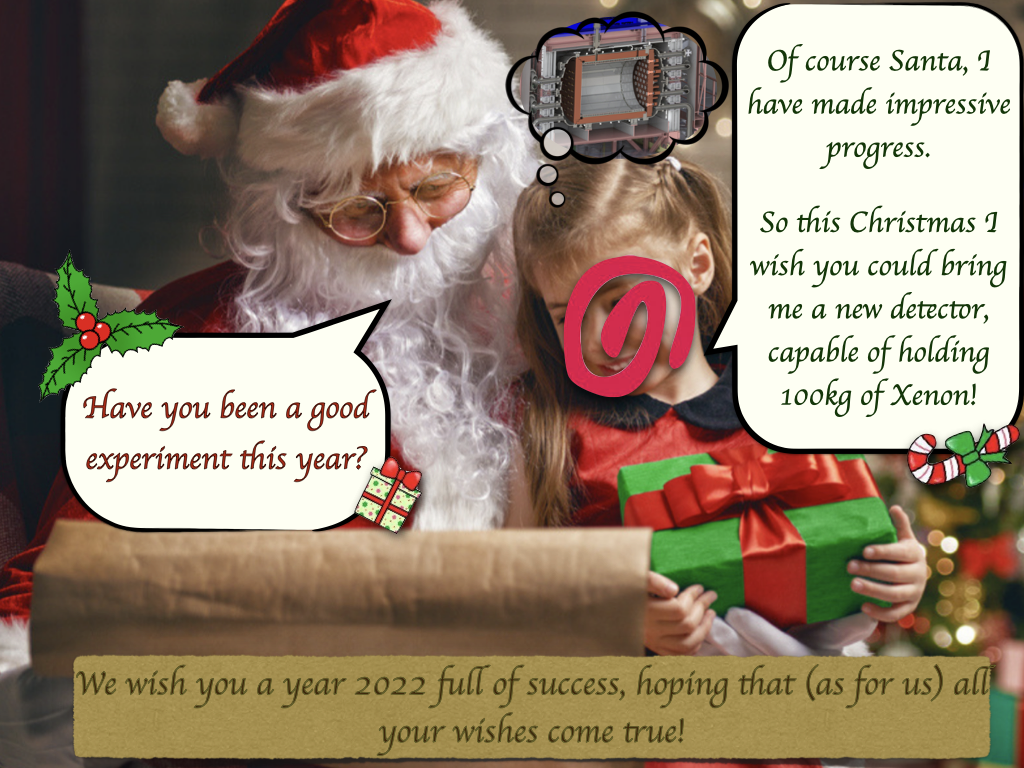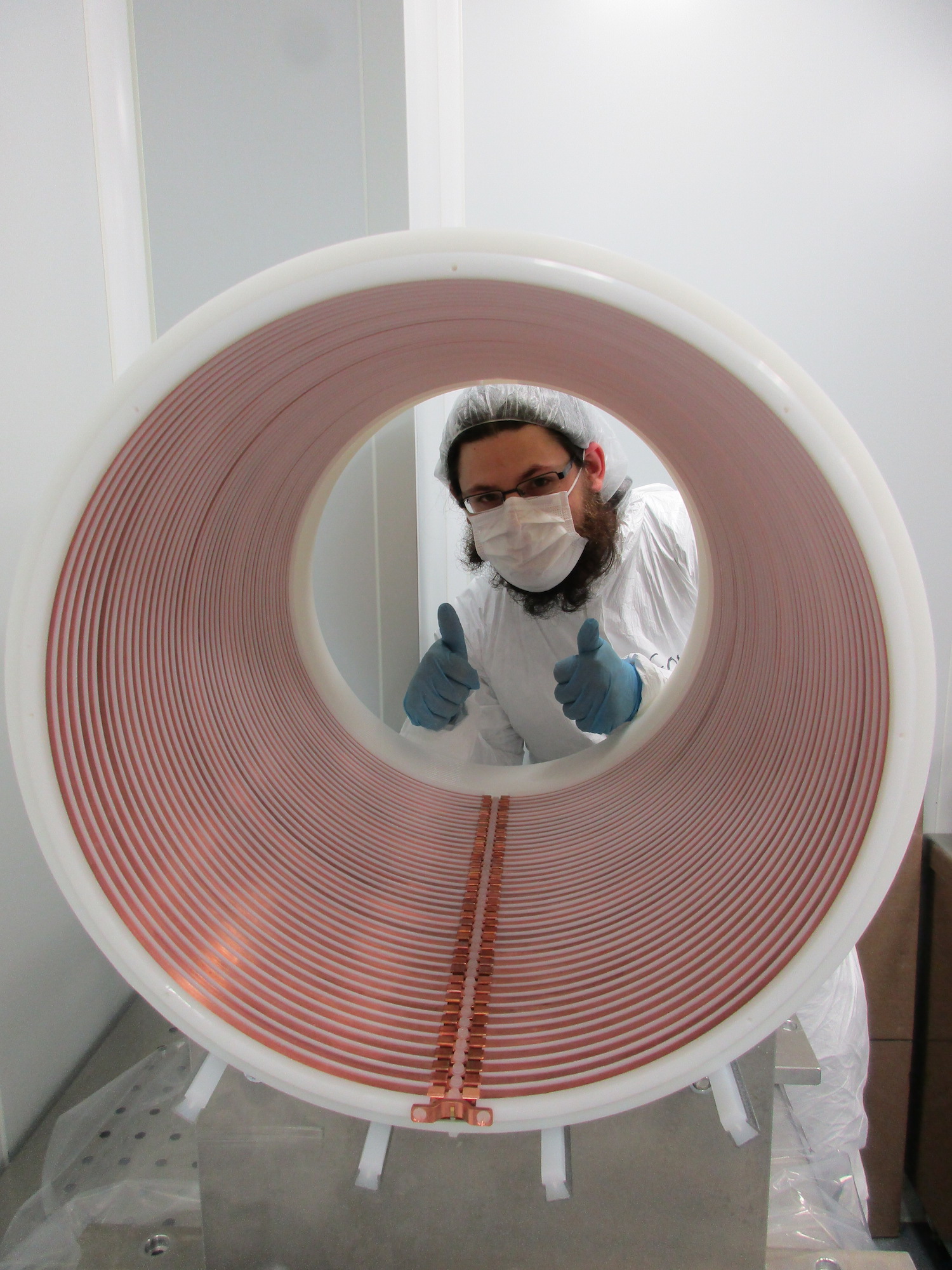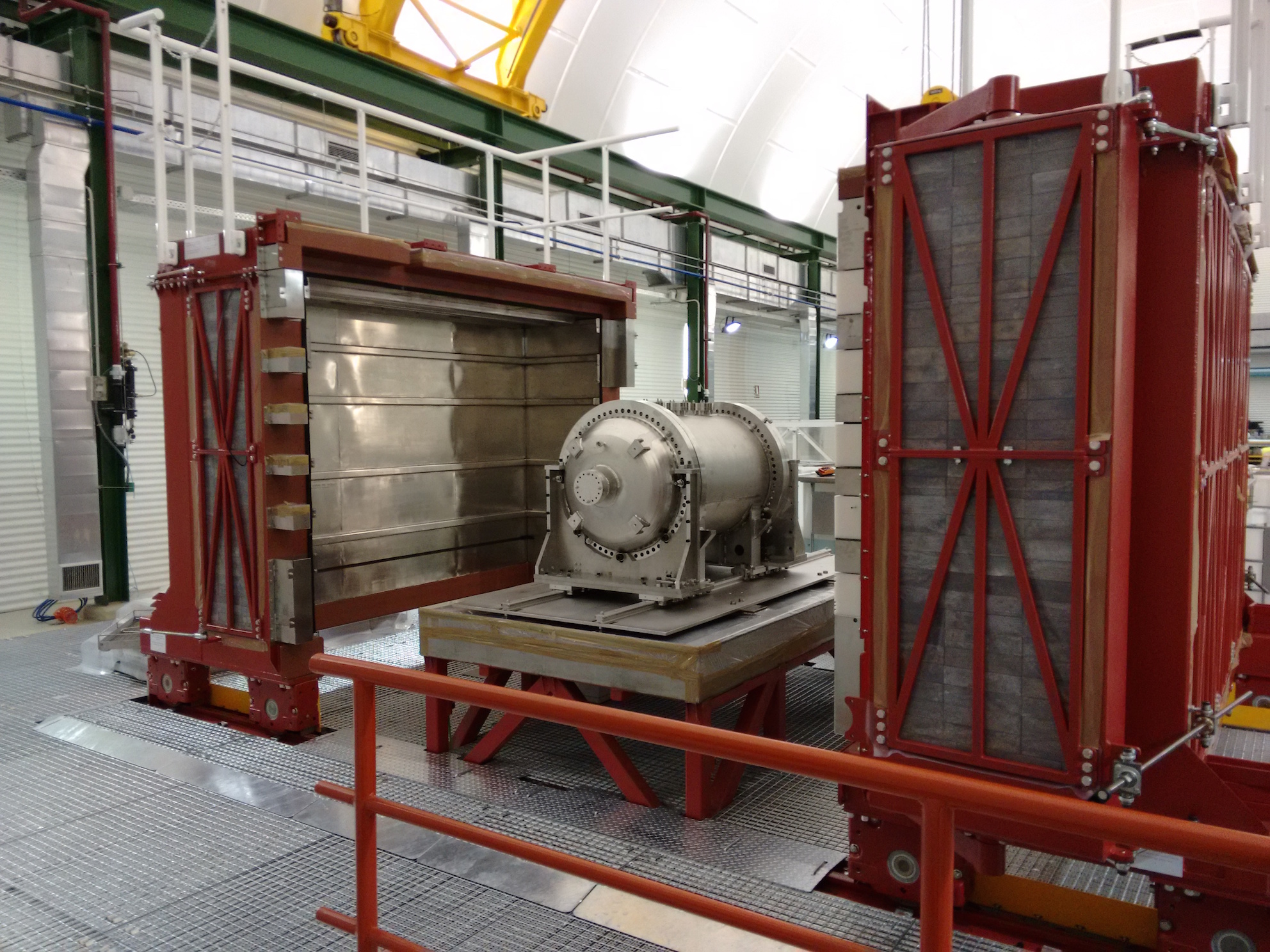The year 2021 is about to come to an end, and we want to publish a new post, since it has meant a significant milestone inside the NEXT programme: the end of the NEXT-White (NEW) detector operation.
This detector implemented the second phase of the NEXT programme. Being a ∼1:2 scale model of NEXT-100, NEW was the largest high pressure xenon (HPXe) gas Time Projection Chamber (TPC) using electroluminescent (EL) amplification in the world. It was located at Laboratorio Subterráneo de Canfranc (LSC), Huesca, under Tobazo Mountain in order to reduce the external backgrounds.
It was conceived to validate the HPXe-EL technology in a large-scale radiopure detector. In particular, the main tasks considered were: (1) the assessment of the robustness and reliability of the technological solutions, (2) the demonstration of the excellent energy resolution and signal over background discrimination expected, (3) the characterization of the backgrounds affecting the experiment (validation of background model) and (4) the two-neutrino double beta decay half-life measurement for 136-Xe.
Around 2013-2014 came up the idea of having this prototype of the NEXT-100 detector to achieve the multiple goals commented just above. During 2014, some components of NEW started to be developed and constructed. At the beginning of 2015, the lead castle and the seismic platform were already builded and placed at the LSC. The energy plane, tracking plane and field cage were installed one year later, when the electronics and gas systems were completed as well. It was mid-2016 and we were ready to switch it on!
NEXT-White construction.
 |
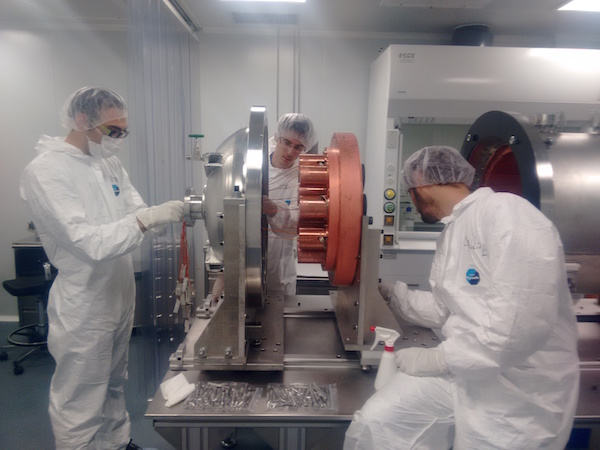 |
Operation
In November 2016, the official operation campaign of NEW started with Run-I, a short engineering run that took one month approximately. After that, the first physics results appeared within the Run-II period, taken from March 2017 to November of the same year. This run was basically intended to understand the performance of the detector and to study the calibration strategy that would be followed, as well as to check the excellent energy resolution expected. The characterization of the radon-induced backgrounds affecting NEXT was also performed.
Run-III and Run-IV periods were not useful in terms of the analysis. The first one corresponded to a very short Run (around 3 months, starting on December 2017) full of problems that did not allow the data-taking, while Run-IV -intended to measure the radiogenic backgrounds, from August 2018 to December 2018- found out some reducible background sources that were masking the energy spectrum. Thanks to the later one, a Radon Abatement System started to be used, and an inner lead castle was placed around the TPC (and inside the other lead structure).
At the beginning of 2019, the data-taking period devoted to the 2vββ measurement started. From that point on up to mid-2020, the extensive low-background Run-V was taken with 136-Xe-enriched xenon inside the chamber. After that, the Run-VI —with 136-Xe-depleted xenon— took place from October 2020 to June 2021.
Data exposure evolution during the final data-taking period.
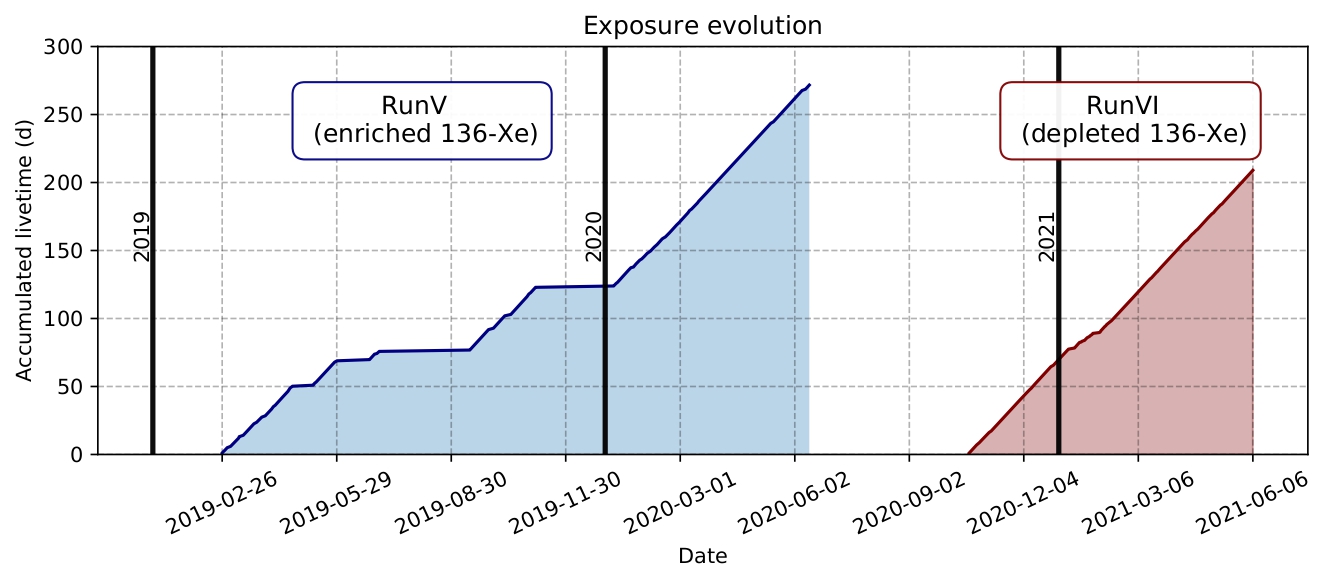 |
It has been some months since the data-taking of NEW stopped, and we can ensure that —after a lot of hard work and patience— all the proposed goals have been fulfilled successfully!
Finally, we would like to take the opportunity to remember our friend and collaborator James White, who was one of the key scientists of the NEXT collaboration. This detector was named after him, and we hope and believe he would be proud of the results obtained with it.
James in the lab.
 |
